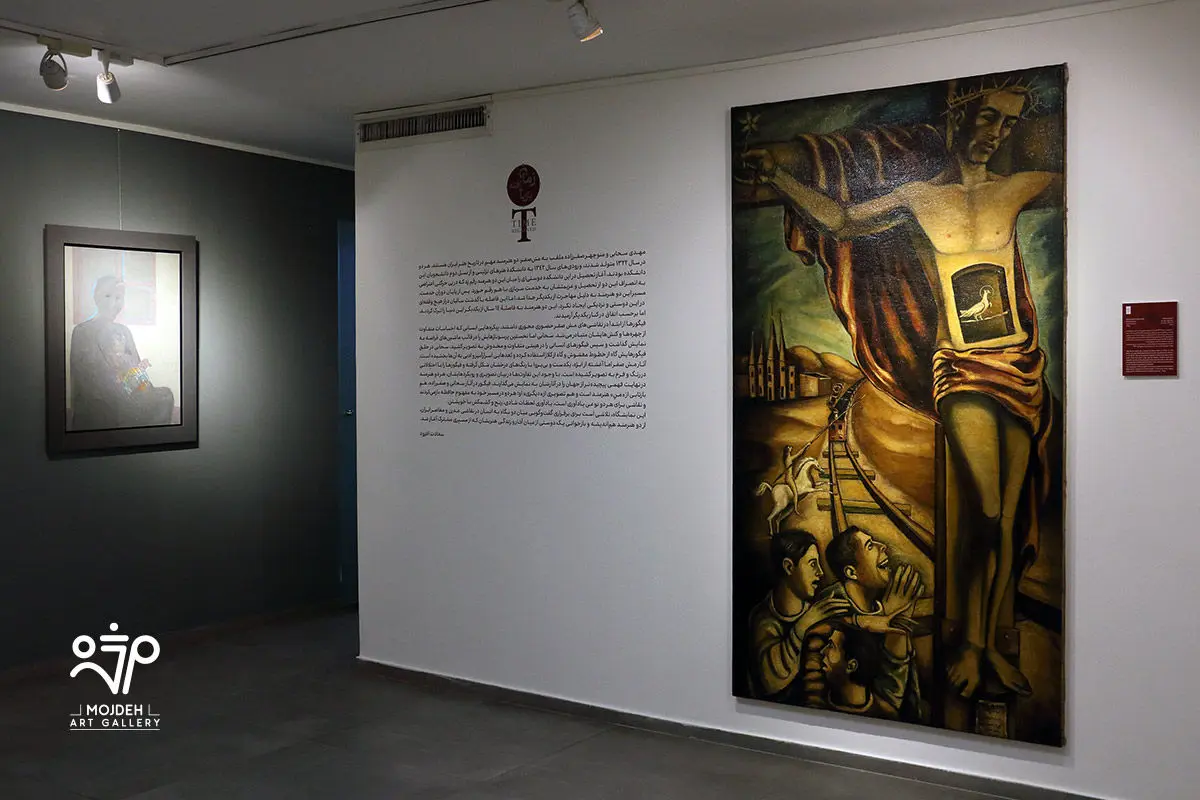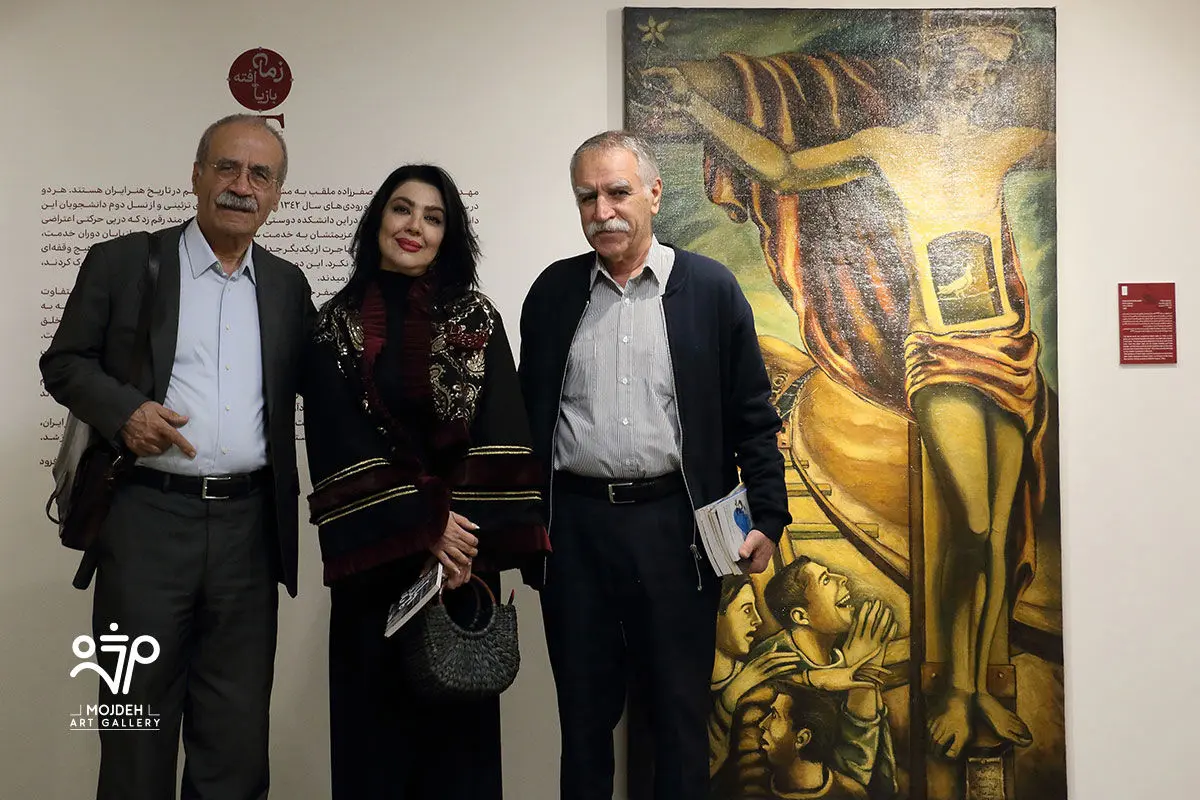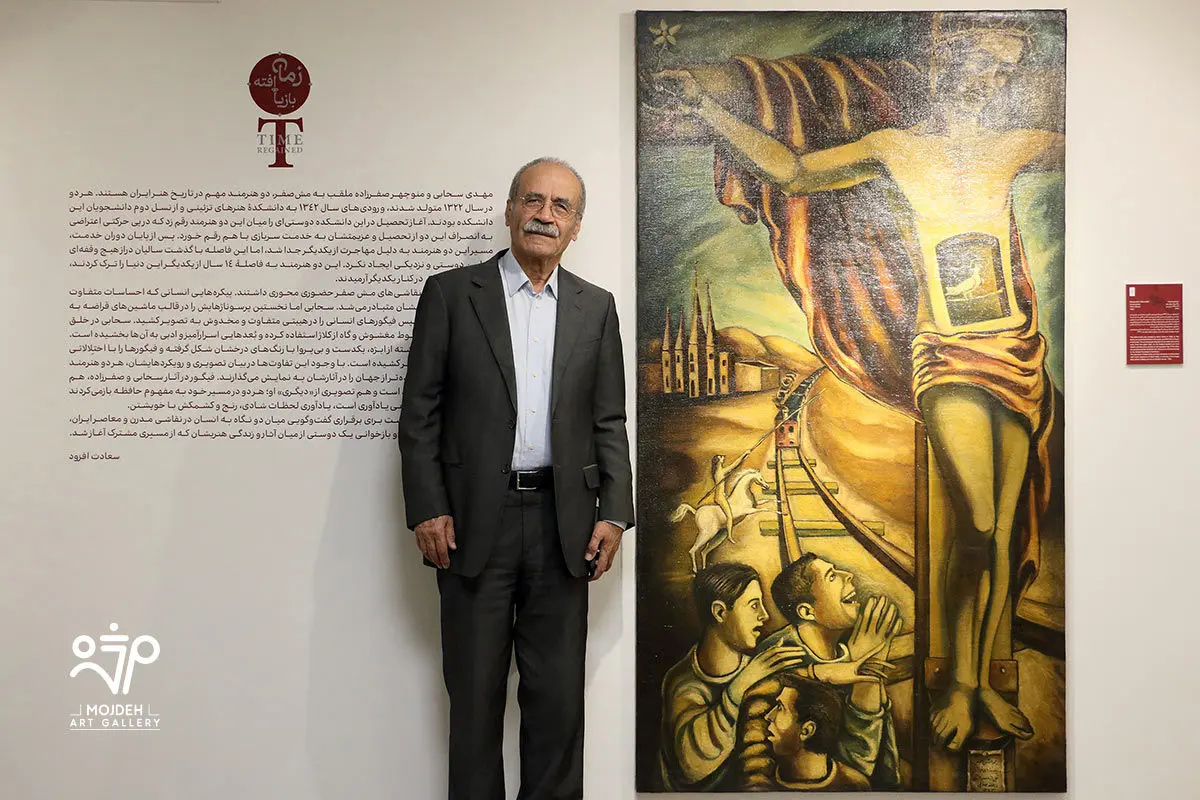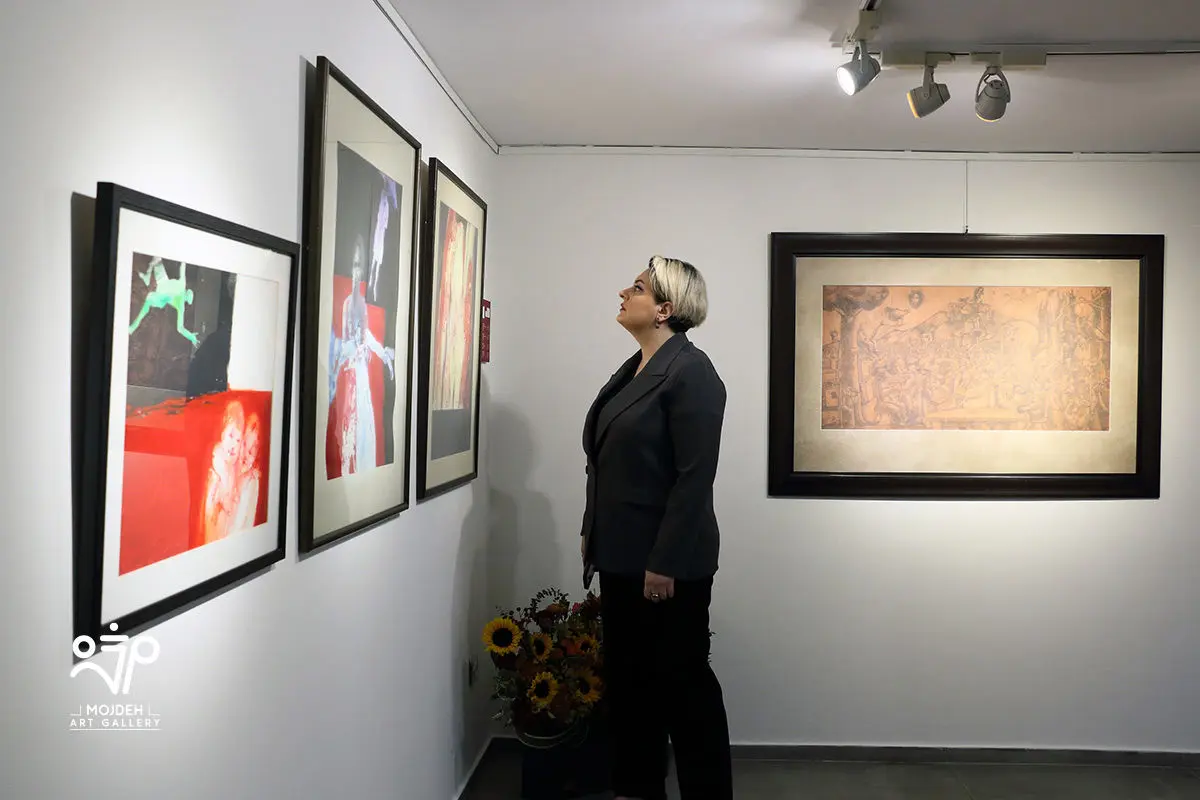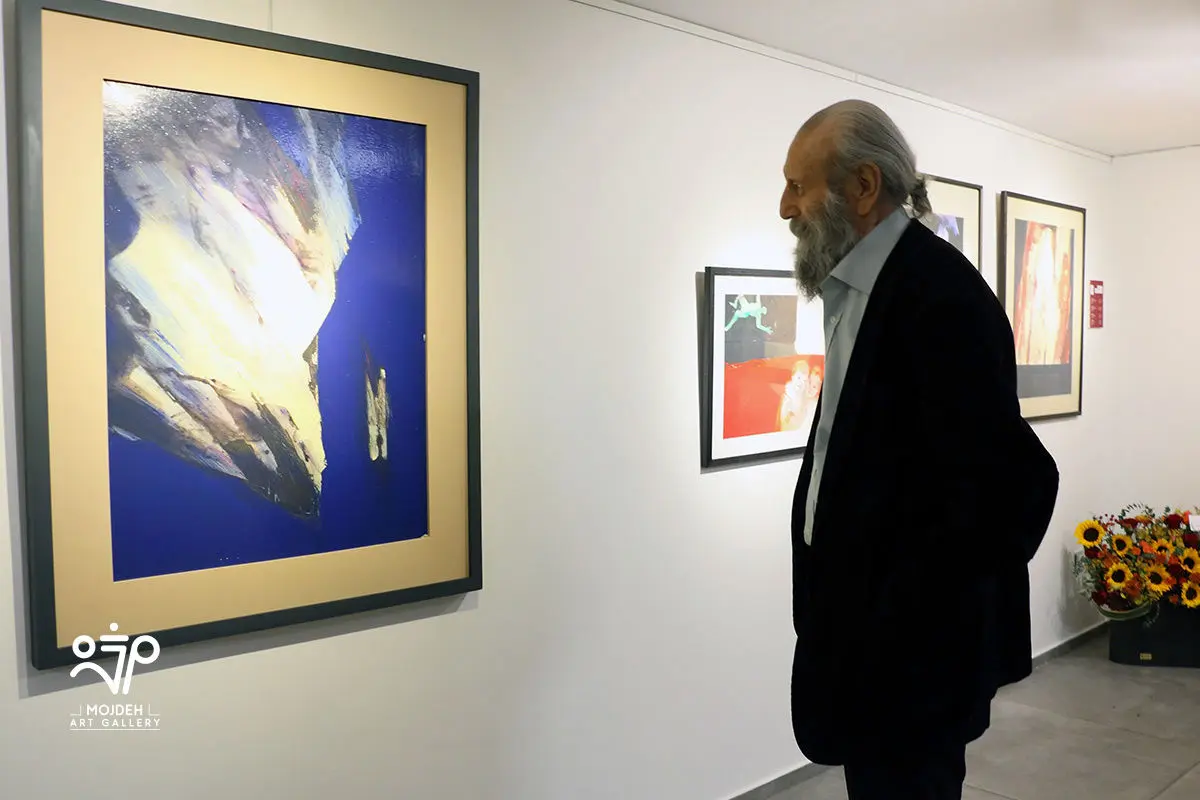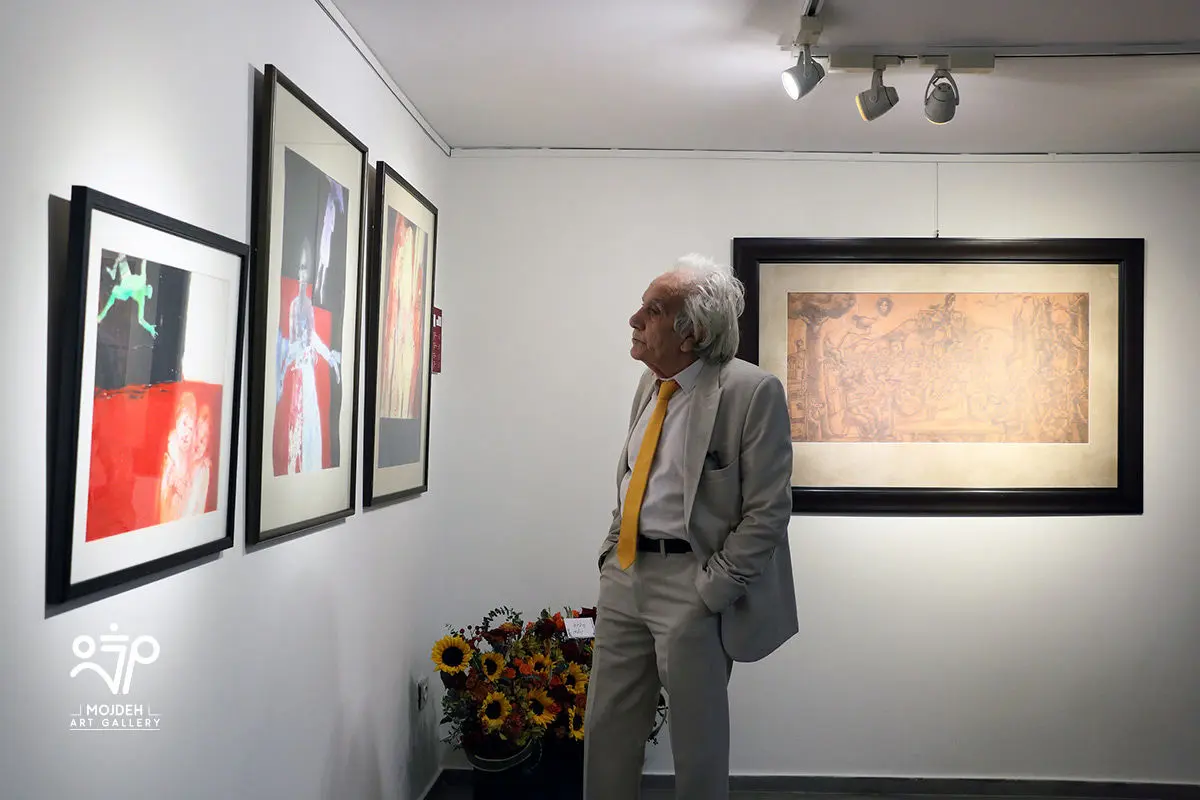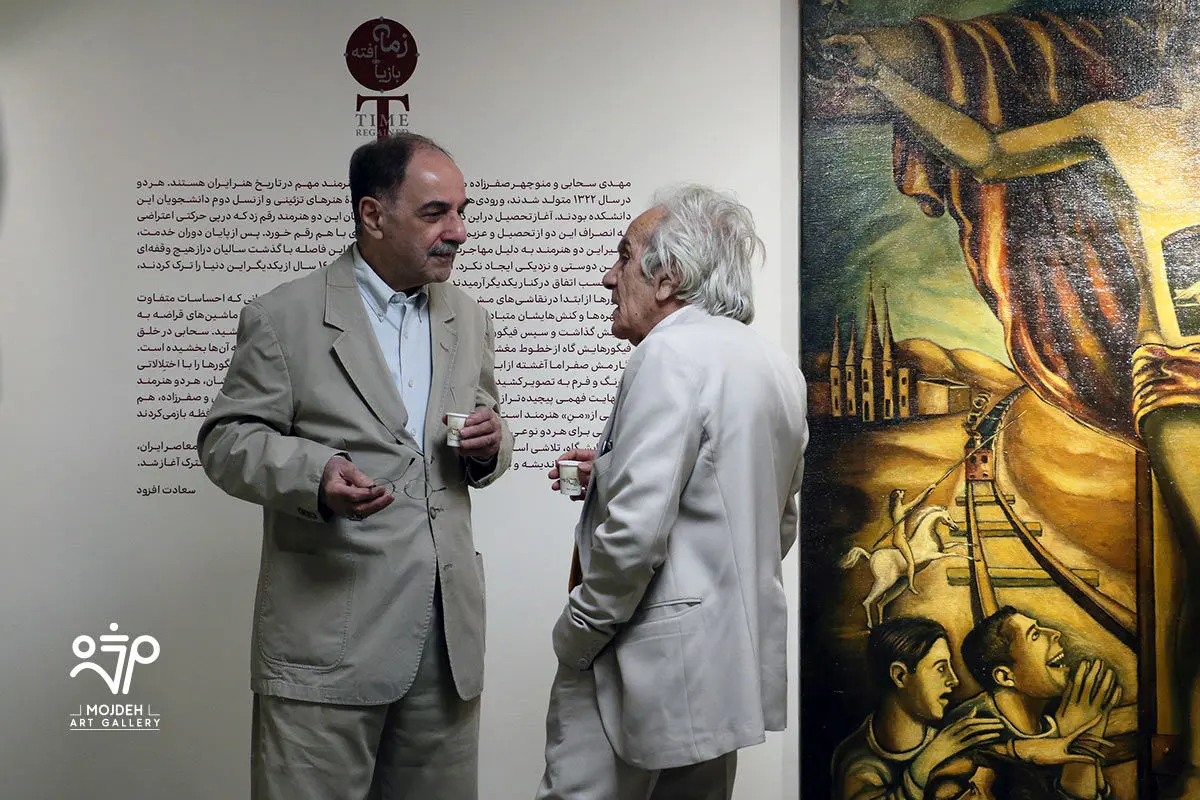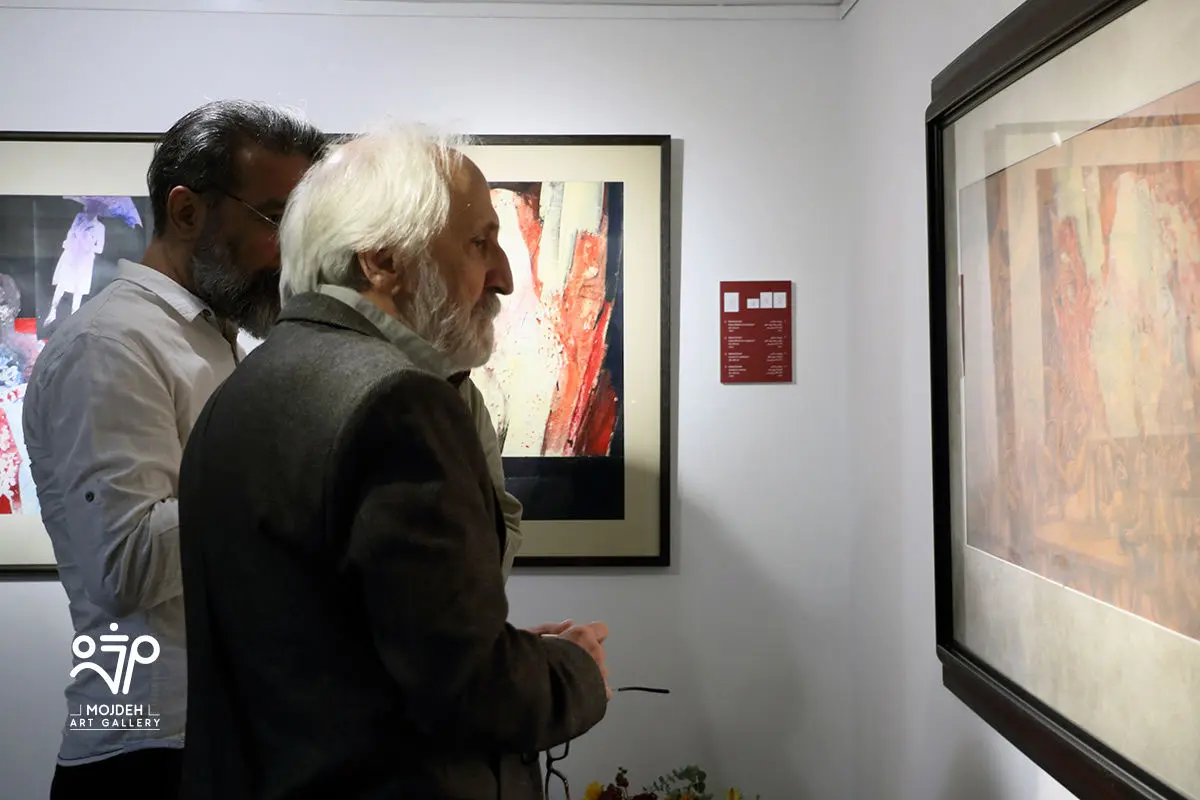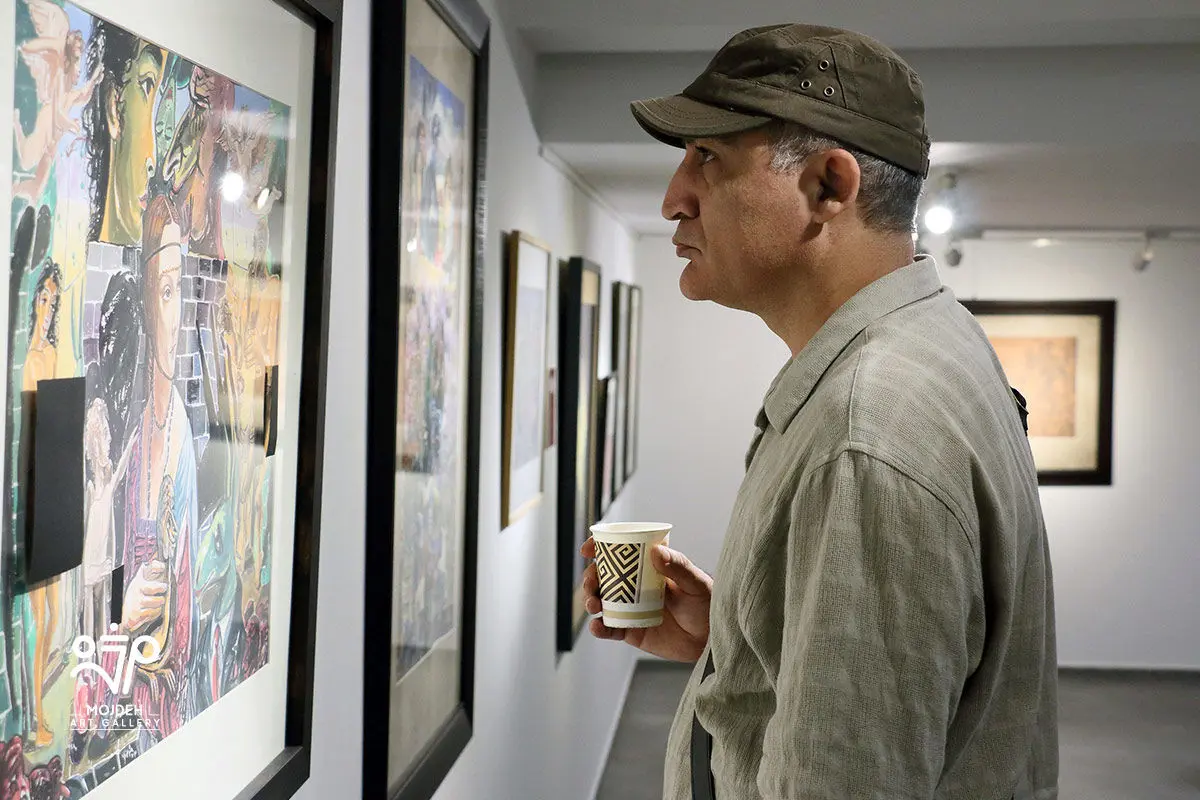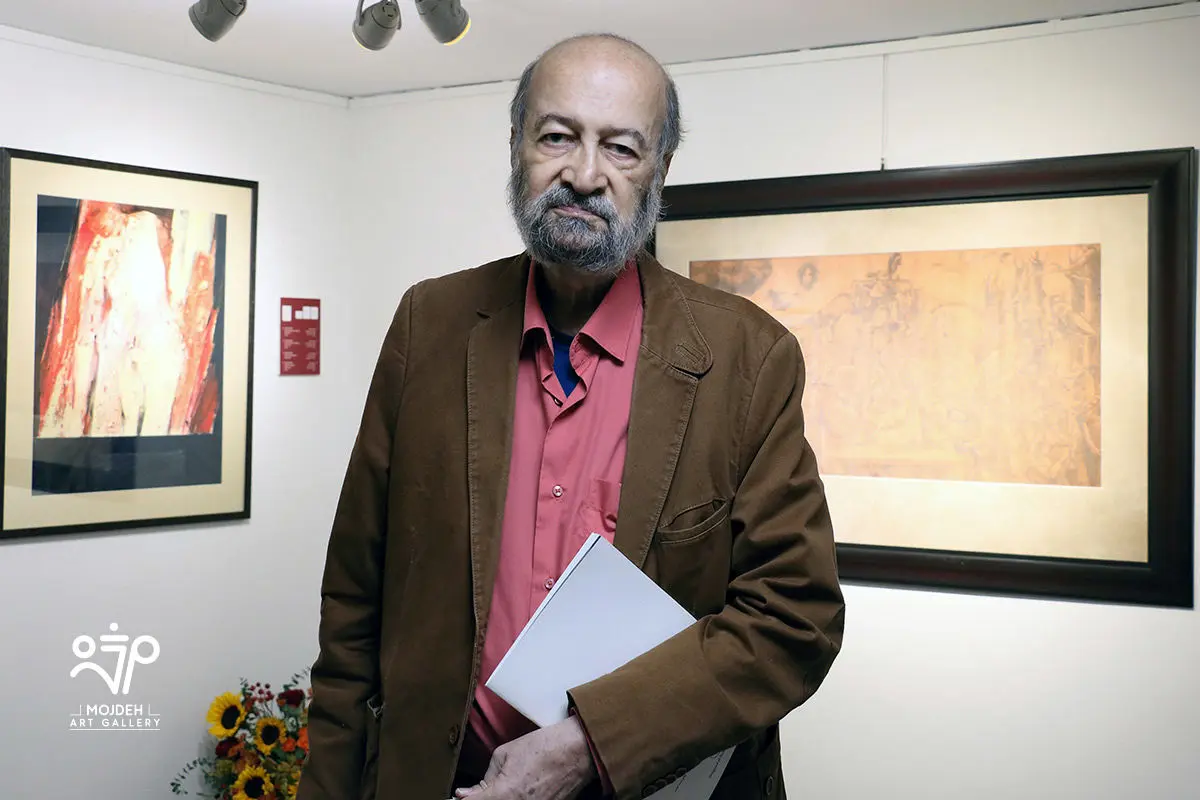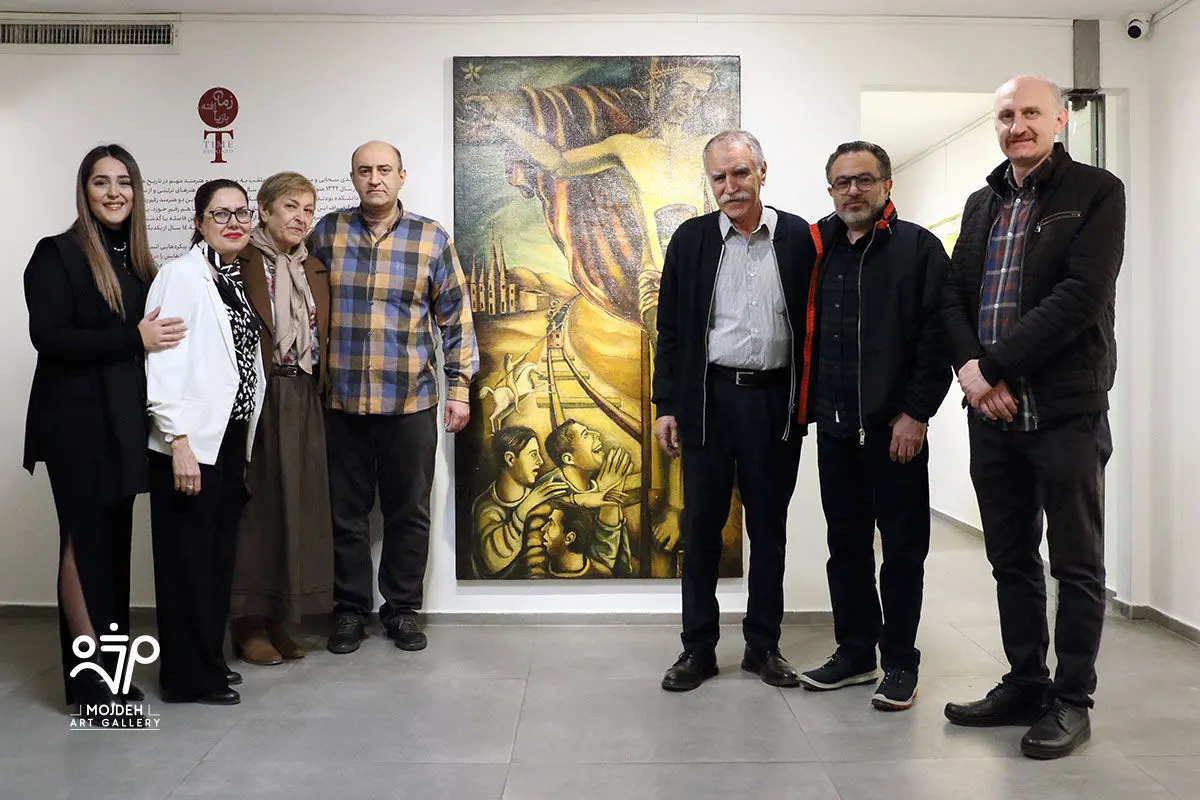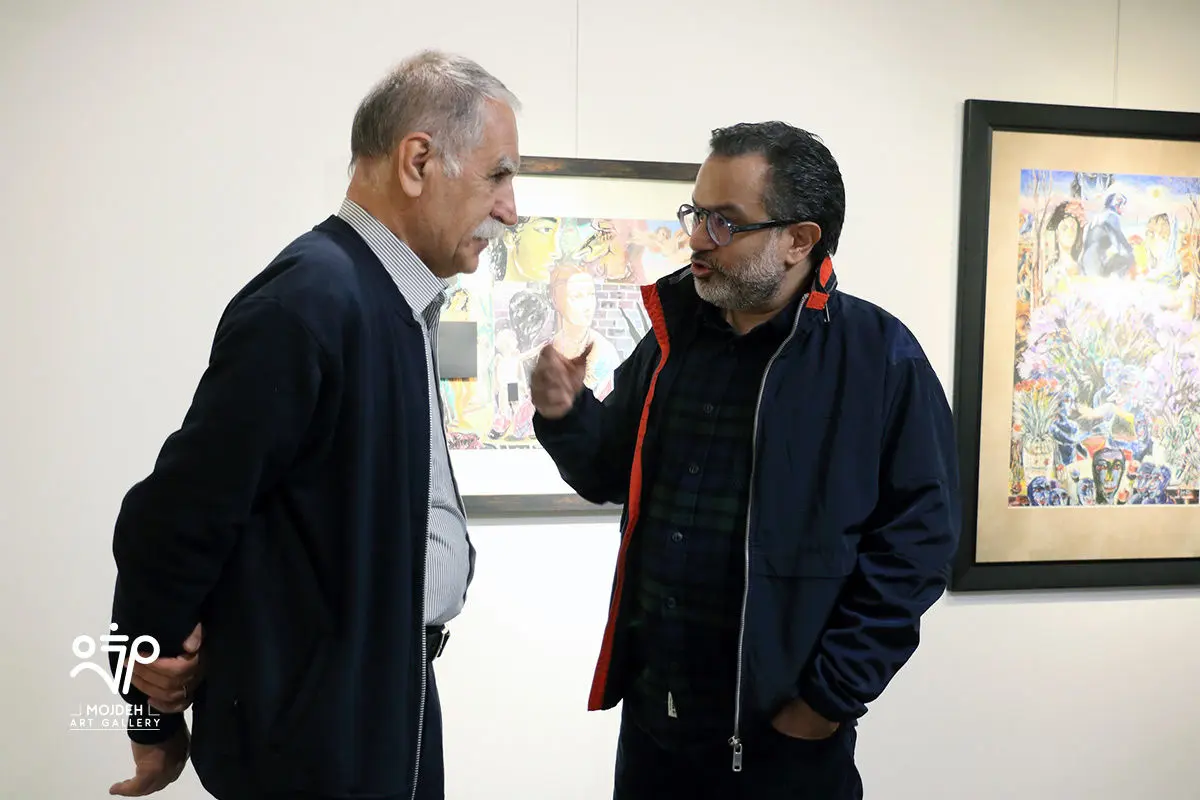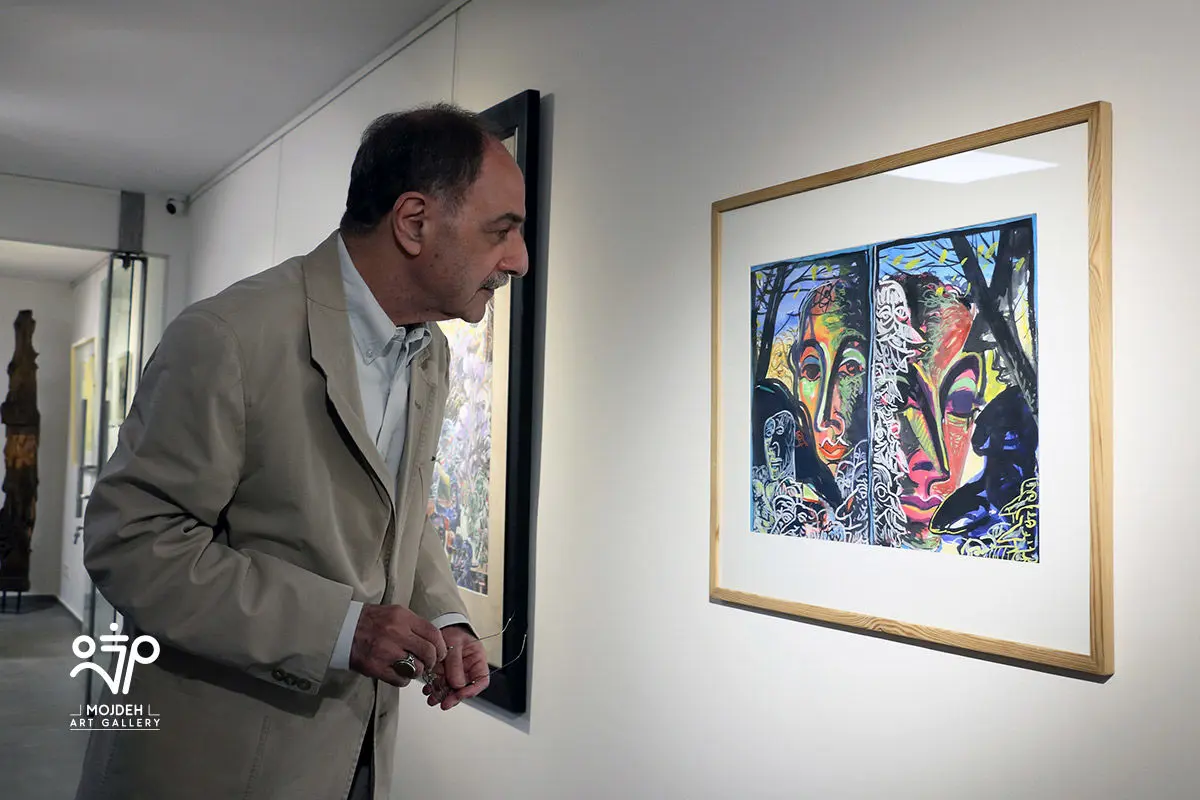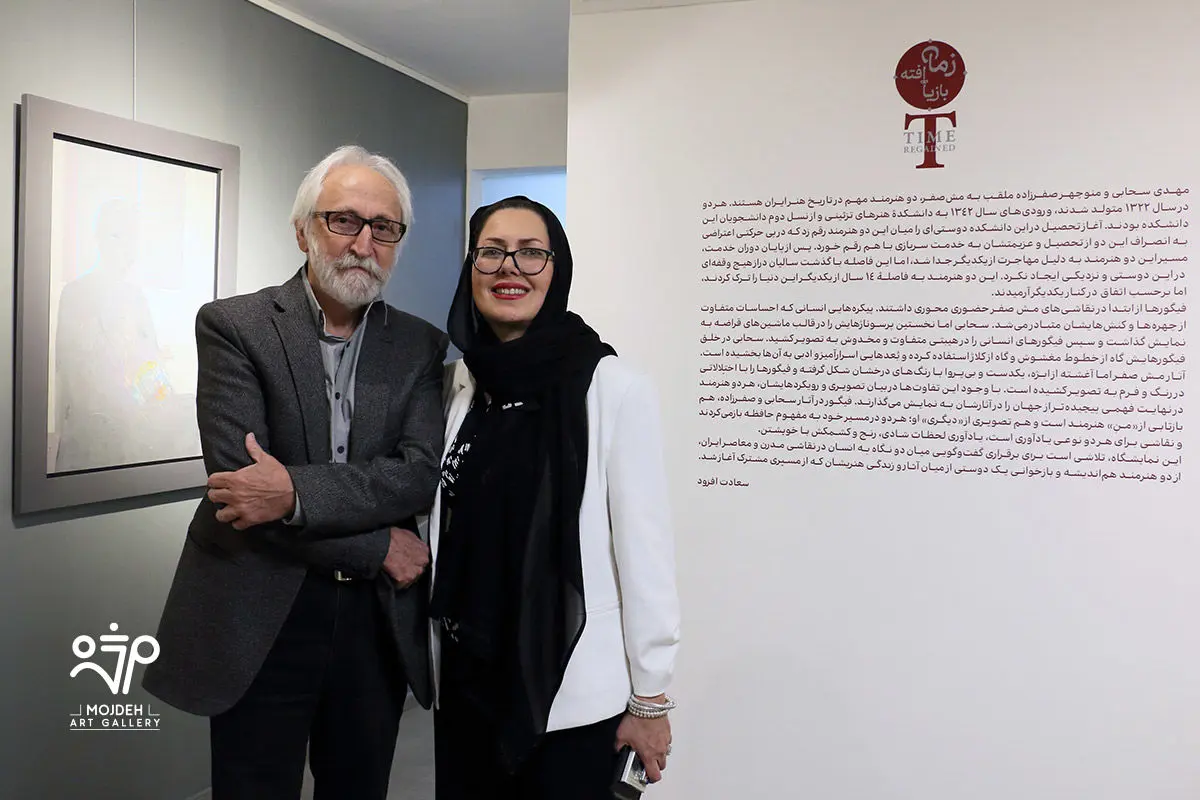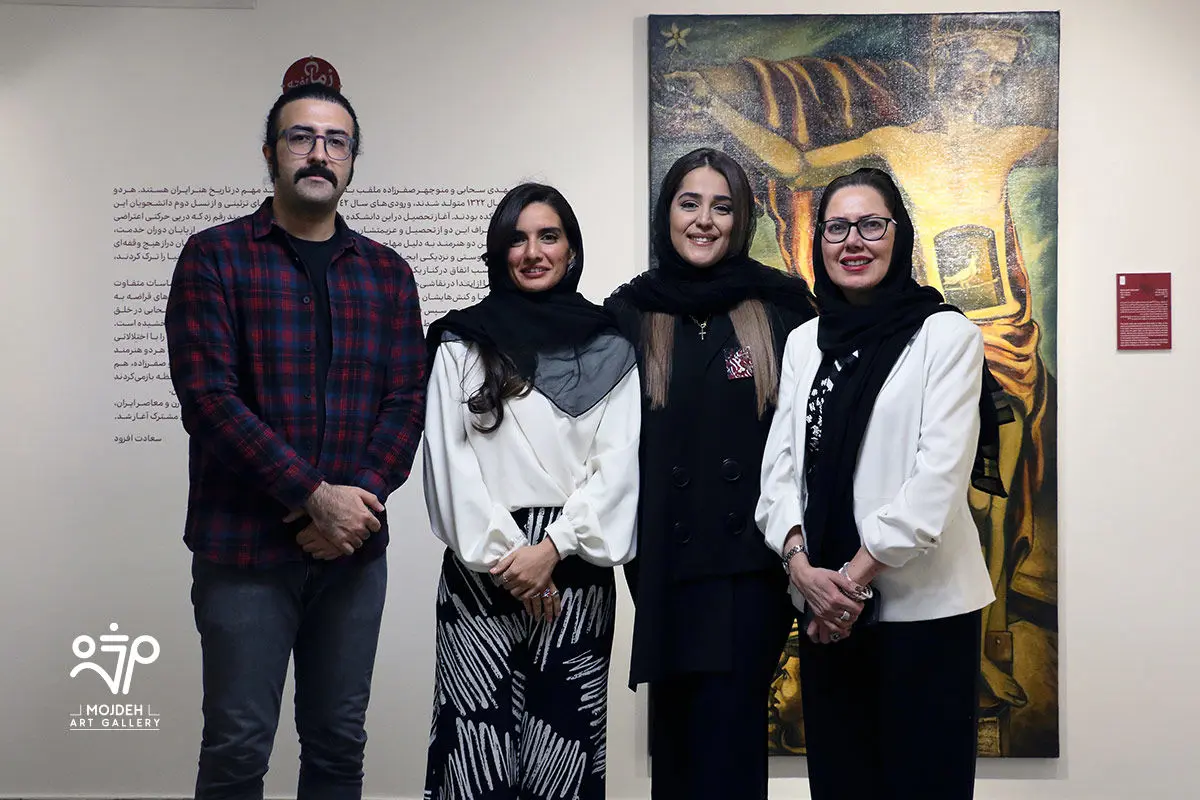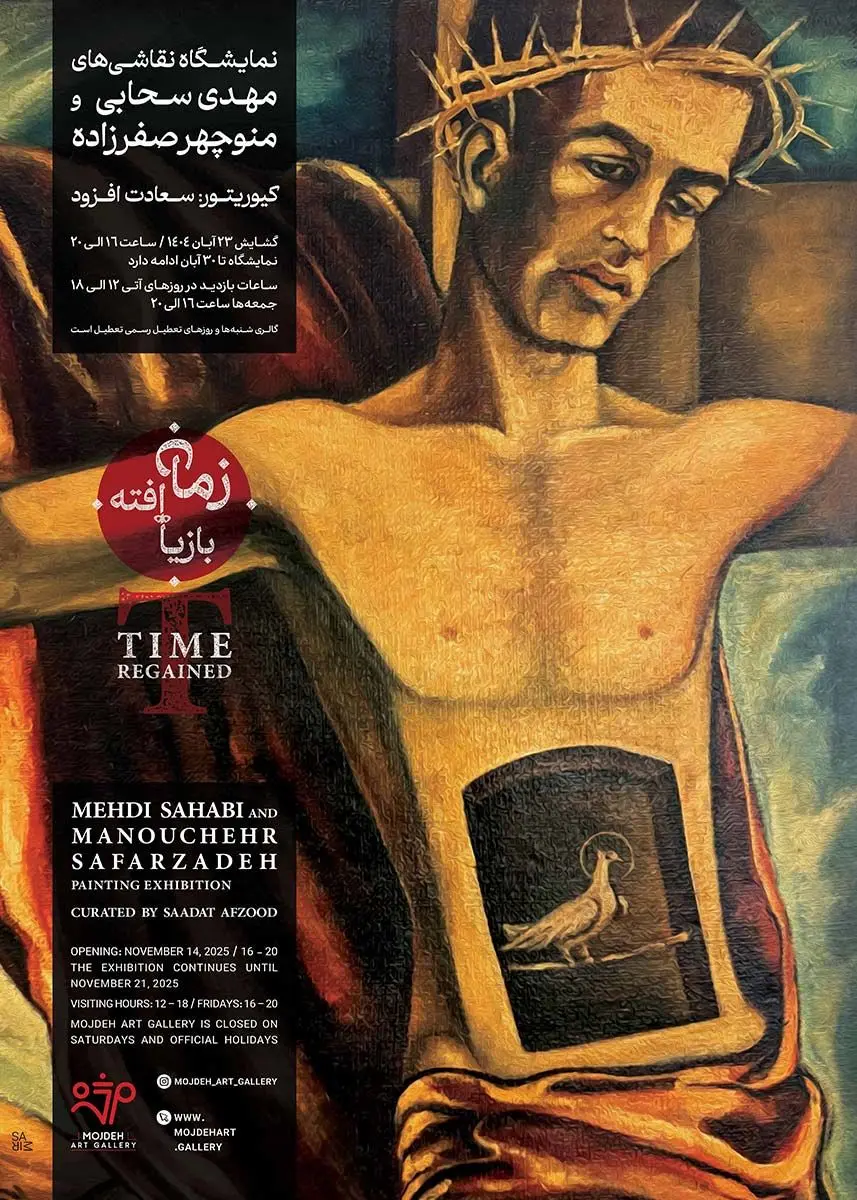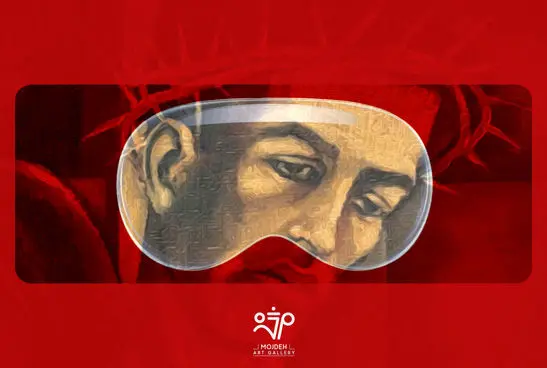Time Regained
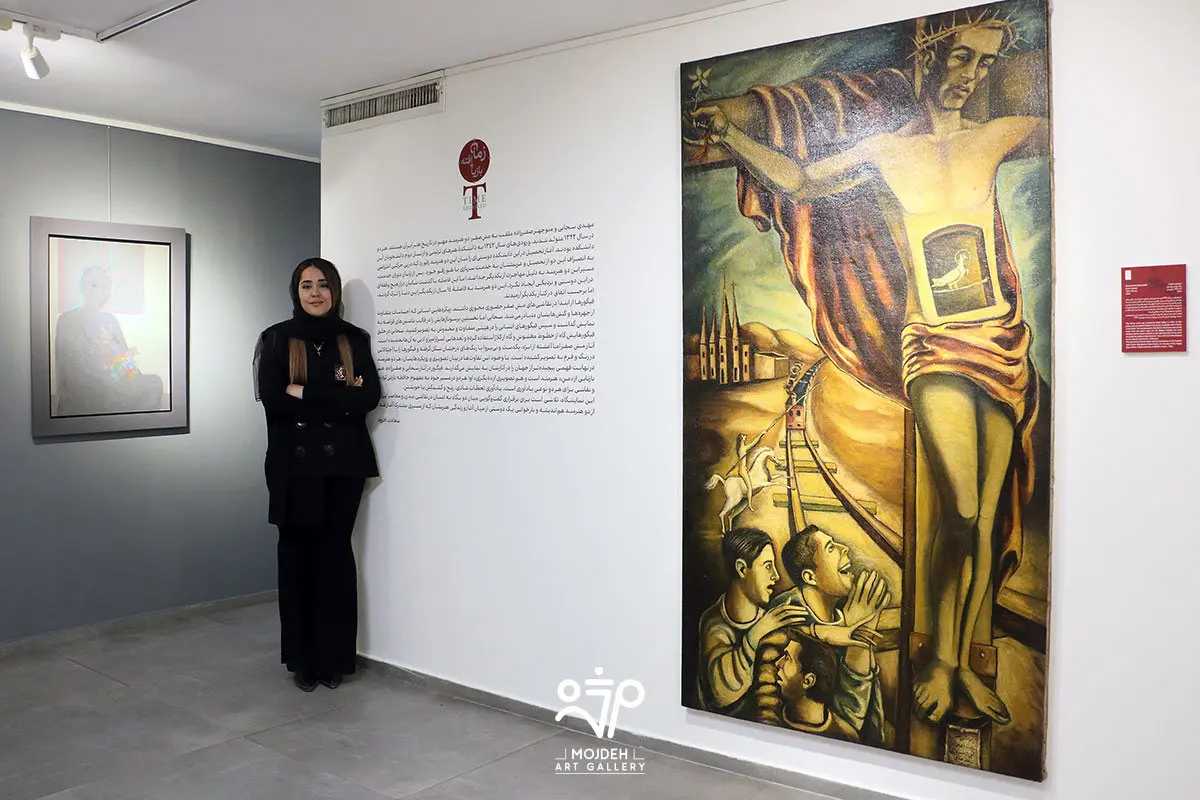
Mehdi Sahabi and Manouchehr Safarzadeh, nicknamed Mash Safar, are two important artists in the history of Iranian art. Both were born in 1943, were entrants to the Faculty of Decorative Arts in 1963, and belonged to the second generation of students at this faculty. The beginning of their studies there established a friendship between the two artists, which was further cemented when they both withdrew from their studies in protest and went off to do their military service together. After finishing their service, the paths of the two artists diverged due to emigration, but this distance did not interrupt their friendship and closeness despite the passing of many years. The two artists passed away 14 years apart, but coincidentally, they were laid to rest beside each other.
Figures were central to Mash Safar's paintings from the start, embodying different emotions through their faces and actions. Sahabi, however, first displayed his personages in the form of junkyard cars before portraying human figures in a distinct and distorted form. In creating his figures, Sahabi sometimes used chaotic lines and sometimes collage, giving them mysterious and literary dimensions. Mash Safar's works, in contrast, are steeped in objects, are uniform and uninhibited, shaped with luminous colors, and depict the figures with disruptions in color and form. Despite these differences in visual expression and approaches, both artists ultimately present a more complex understanding of the world in their works. The figure in the works of Sahabi and Safarzadeh is both a reflection of the artist's "Self" and an image of the artist’s perception of the “Other." Both, in their own way, return to the concept of memory, and for both, painting is a form of recollection. A recollection of moments of joy, suffering, and internal struggle.
This exhibition is an effort to establish a dialogue between two perspectives on the subject, human in Iranian modern and contemporary painting, represented by two like-minded artists, and the reinterpretation of a friendship through their works and artistic lives, which began from a shared path.
Saadat Afzood
Safarzadeh became familiar with Coffee House Painting from childhood. He was captivated by the appeal of color and line in Coffee House Painting. In Coffee House Painting, the world is the arena for the battle between truth and Wrong. The war between the Yazidians and the Muslims, the accompaniment of the British ambassador with the former, and so forth...
The struggle between Right and Wrong is a kind of Iranian identity and has a history reaching back to before Islam. Safarzadeh's worldview originates from such a conflict. In his paintings, the world is a nightmare of the triumph of evil over good. He sees misshapen specters who, with seemingly loving eyes, seek to take possession of all beauty.
These abject and greedy figures are present everywhere: in the street, at home, at the workplace, and inside people. They know they have a share of this world, and they are prepared for a great battle to achieve a larger share, "of which no one knows the outcome1," and Safarzadeh brings them onto the canvas in a great understanding.
Nemat Lalei
1- In a battle of which no one knew the outcome... - From the book Paradise Lost by John Milton.

